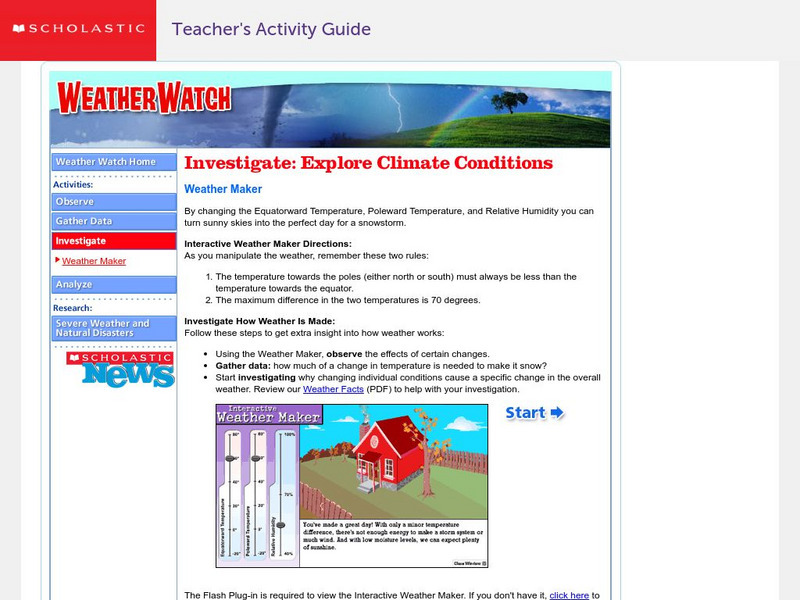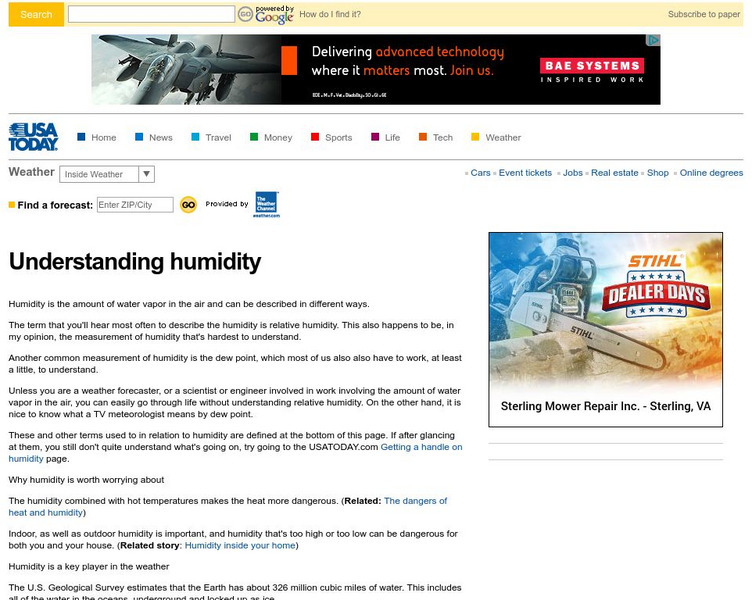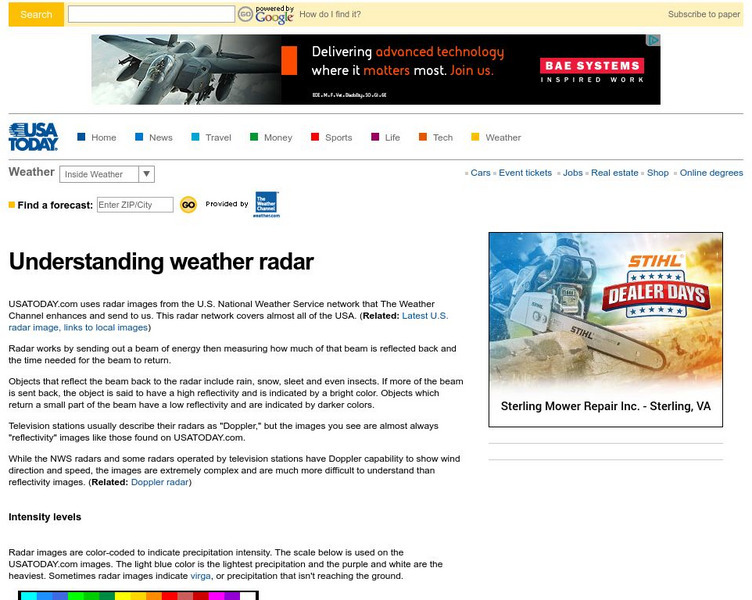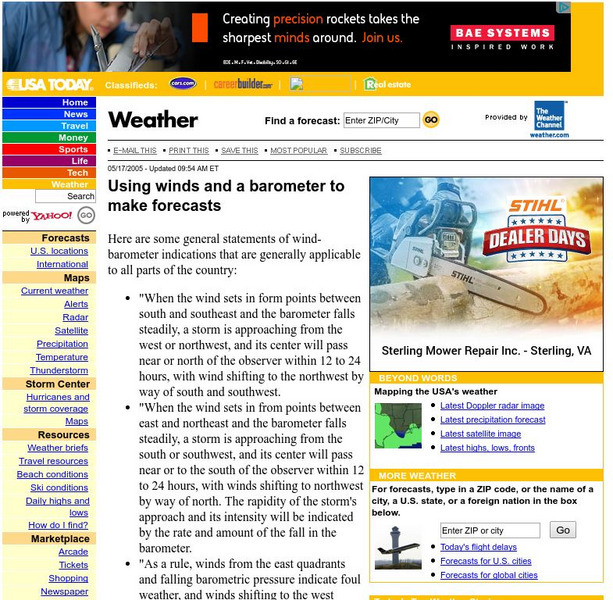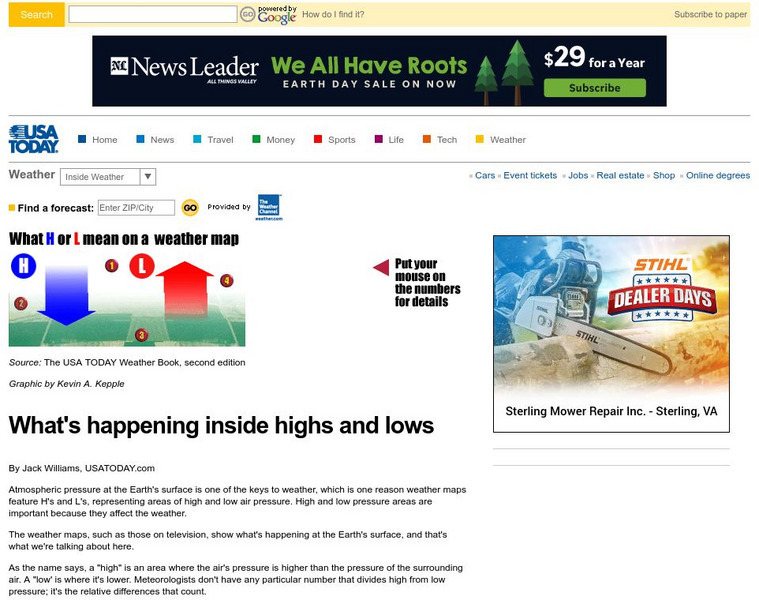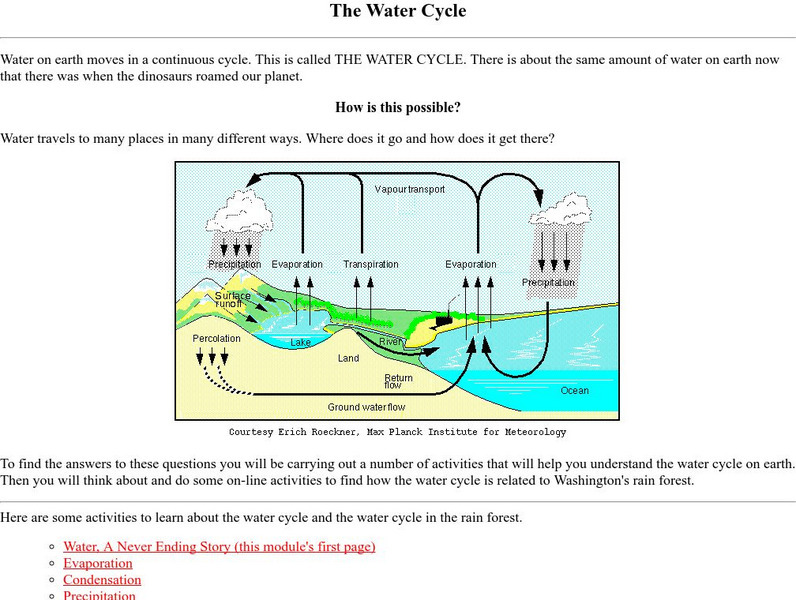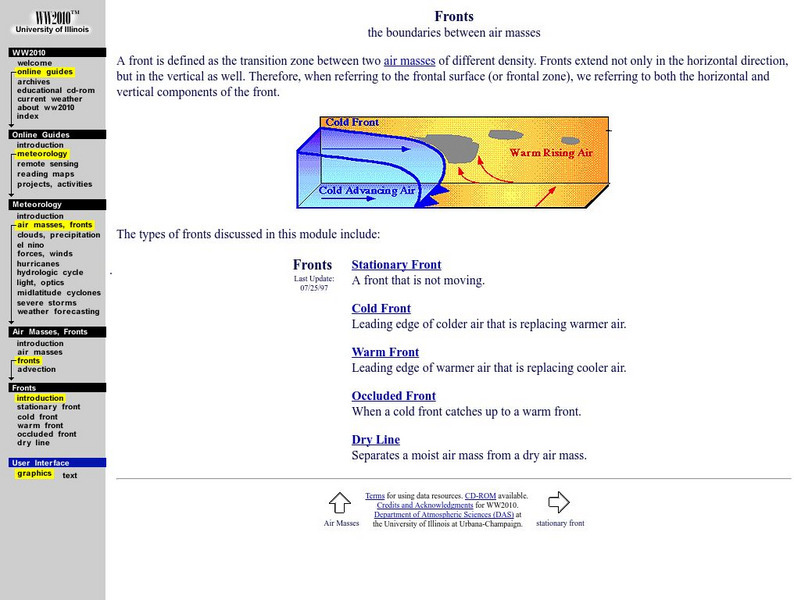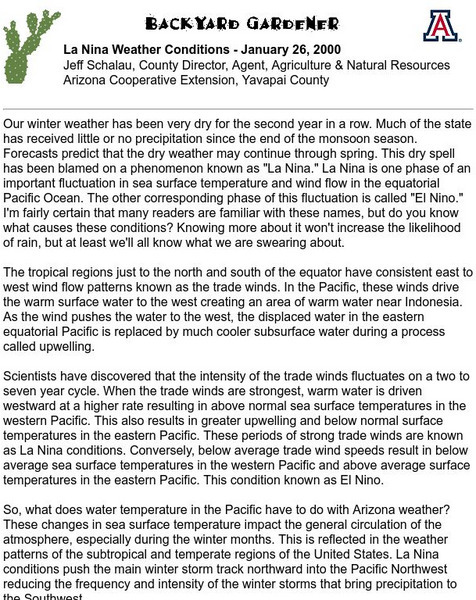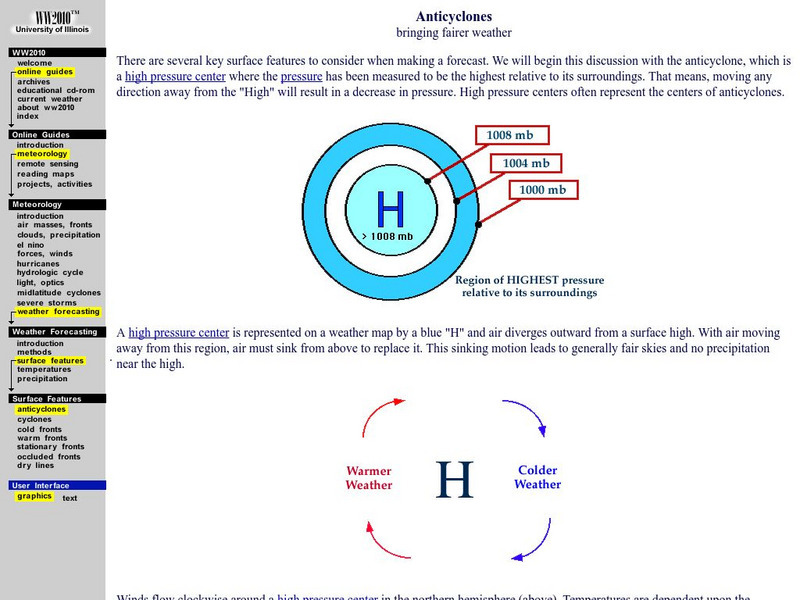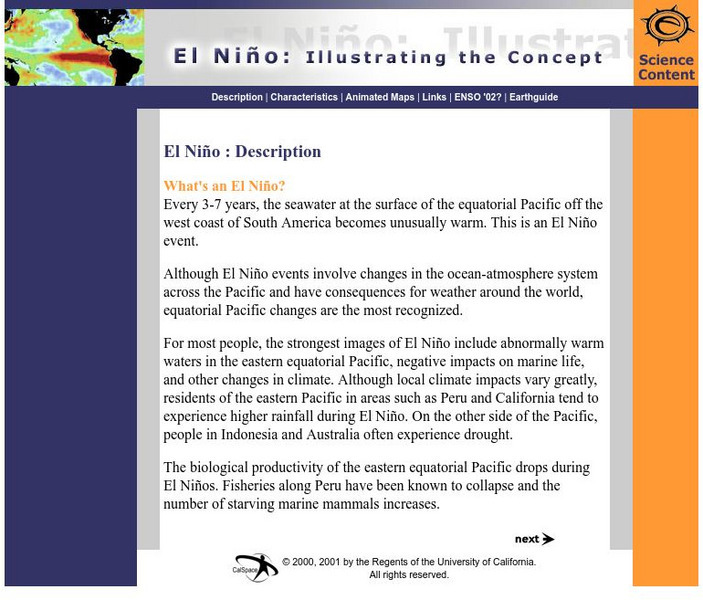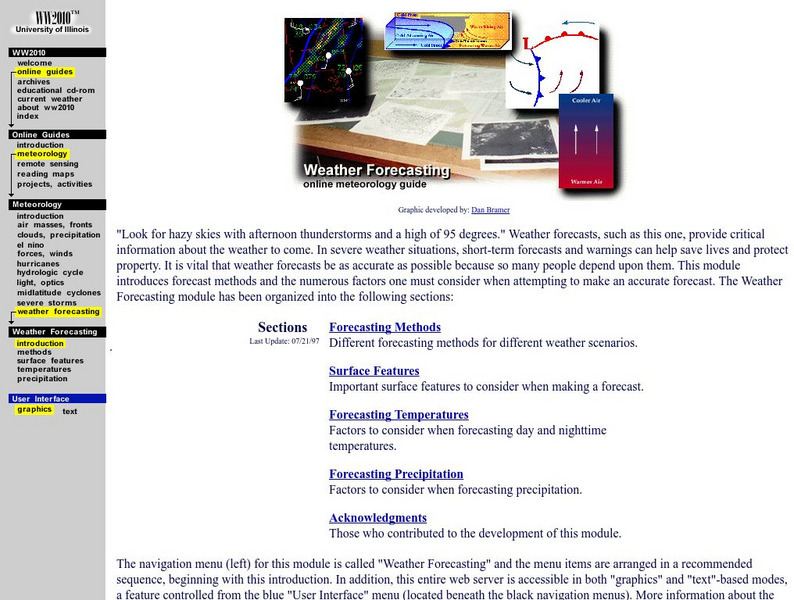PBS
Pbs Learning Media: Hurricane
Students are asked why viewing weather phenomenon through space cameras is important.
Scholastic
Scholastic: Investigate: Explore Climate Condition
An interactive weather maker allows students to manipulate temperature and humidity and to view the type of weather that results.
Scholastic
Scholastic: Analyze: Forecast the Weather
Choose a weather-related topic, view the map, then make your own weather forecast.
USA Today
Usa Today: Weather Basics: Understanding Humidity
This article is a guide to understanding humidity and related weather concepts. Includes helpful definitions of multiple terms.
USA Today
Usa Today: Understanding Weather Radar
This article describes the basics of understanding today's weather radar and radar images. It also explains factors that influence radar images including ground clutter, beam blockage, bow echos, and virga.
USA Today
Usa Today: Your Guide to Tornado Safety
This resource provides information about tornado safety to its readers.
USA Today
Usa Today: How Winter Storms Bring Rain, Ice and Snow
A great diagram of precipitation and what forms at different degrees. A short description on the formation of rain, snow, and sleet.
USA Today
Usa Today Weather: Understanding Forecasting
This article provides basic principles to help understand weather forecasting. It also gives links to sites with related topics.
USA Today
Usa Today Weather: Using Winds and a Barometer to Make Forecasts
Describes the ways in which wind direction and barometric pressure can be used by the amateur weather forecaster to make predictions about the weather.
USA Today
Usa Today: What's Happening Inside Highs and Lows
Interactive media is used to explain the differences between high pressure and low pressure weather systems.
University of Washington
University of Washington: Water Cycle
This page from the University of Washington has an excellent diagram of the water cycle. There are 8 water cycle hands on activities on the bottom of the page. Also there is a link to a teacher reference page.
University of California
Sio/ El Nino
This page has links to the causes of El Nino, a non-technical definition of El Nino, causes, and tons of other information.
University of Illinois
University of Illinois Urbana Champaign: Fronts
With the study of weather we need to know that there is air mass like fronts that change weather. This site shows us the different kinds of fronts that we experience.
University of Texas at Austin
University of Texas: Thunderstorms
You can find out the conditions for a thunderstorm, the life cycle, types, and wall clouds.
University Corporation for Atmospheric Research
Ucar: National Center for Atmospheric Research: Severe Weather Storms [Pdf]
Teachers and/or students are given four scientific experiments related to severe weather. Included are making clouds, homemade lightening, tornado in a bottle, and dissecting hailstones. Dramatic photos of severe weather conditions are...
Scholastic
Scholastic: Air and Weather
Students chart weather conditions, learn how to determine an average temperature, and build paper gliders to observe the effects of wind.
University of Arizona
Backyard Gardener: La Nina Weather Conditions Jan 2000
This site by Arizona Cooperative Extension discusses the strong trade winds called "La Nina," and how they effect the climate.
TED Talks
Ted: Ted Ed: Rachel Pike: The Science Behind a Climate Headline
In this brief video tutorial, atmospheric chemist Rachel Pike provides a glimpse of some of the methods that scientists are using today to study climate change and Earth's atmosphere. [4:14]
University of Illinois
University of Illinois Urbana Champaign: Surface Features to Consider When Forecasting
This site looks at the important surface features to consider when making a forecast. High pressure and atmospheric pressure is explained. Be sure to use the arrows at the bottom to navigate through this site.
University of California
Earthguide: El Nino: Illustrating the Concept
Do you know what happens during a typical El Nino? This overview provides a description, characteristics, and animated maps showing sea surface temperature changes during past El Nino events.
University of Illinois
University of Illinois Extension: Ww2010: Weather Forecasting
Explains various techniques used in weather forecasting including persistence, surface features, temperature, and precipitation.
University of Illinois
University of Illinois Urbana Champaign: Weather Forecasting, Online Meteorology Guide
Accurate and timely weather forecasting is necessary to protect people and property. Methods of forecasting a presented.
Texas Instruments
Texas Instruments: Water Cycle
This StudyCards stack enables students to review the vocabulary associated with weather.
Texas Instruments
Texas Instruments: Numb3 Rs: Markov Chain Links
Based off of the hit television show NUMB3RS, this activity introduces students to the concept of Markov Chains, and shows students how to find the probability of something (dependent) happening in the future, given certain conditions...

